The Latin way to letting it all go at the biggest party of the year
Fiesta filled February is a little bit special in the Argentine calendar. A month of weekend long street parties see Porteños partying like only they know how. Further north in the province of Entre Rios, Gualeguaychú explodes as hedonists lap up the closest carnival to their Brazilian neighbours.
Rewind four years and I was cutting my teeth trying to samba in Rio De Janeiro, and although inimitable in terms of grandeur and locura, Argentina’s still got it going on. As if you needed proof – even President Mauricio Macri’s dance moves, busted out at his inauguration, are featured on a promo ad for Rio’s very own celebrations this year – no joke! Although, maybe there is one – on him.
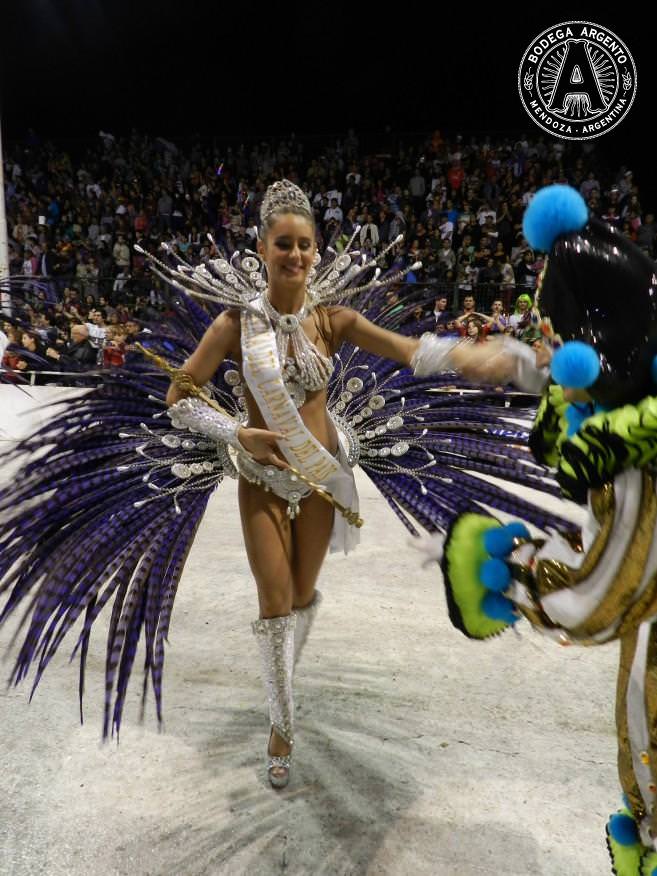
Permission to party – The Real Argentina’s Guide to carnival…
The dates
February 8th and 9th are bookmarked shake your booty national holidays in Argentina. Falling annually before Ash Wednesday, it’s time to purge your self knee-deep in four days of carnival pleasures before Lent arrives. Just like in Brazil, it was Spanish settlers who first introduced carnival to Argentina back in the 15th -17th centuries.
Carnaval Porteño (Buenos Aires’ Carnival)
Let’s start on home turf – if you’re staying in capital over carnival weekend, head to the weekend block parties to experience the vibrant murgas (marching troops of percussionists and dancers). With 18 neighbourhoods and 29 parties to choose from – Dates and addresses you’ll be hard pushed to escape the rowdy, visceral beats of the bombo con platillo. This large drum is strapped to the player’s chests as they bang out rhythms on its sides in coordination with a cymbal on top. Skillful. And even if moving your hips normally brings you out in a rash, just try and resist the seemingly battery powered energy of the murgueros’ singing and acrobatic dancing.
As these are good old free street parties, everyone’s involved from bambinos (babies) to abuelos (grandparents) so you can really mussel in on the action – unlike the ticket paying parades of Gualeguaychú.
Get loaded up with cans of cerveza and spray foam ready to shoot at wily teens as you dance and dodge your way through the party vibes till late.
Check out this handy map to see which blocks are gonna be rockin’
A Family Affair of murga madness
This is the biggest month of the murgueros lives, and although it comes but once a year, family and friends hone their skills together on weekends in public plazas for the other 11. It’s a real family affair, as I found out from spending some time with Monica, a Murguero mother at their rehearsals one Saturday. Murgas give themselves funny or self-depreciating names and Monica and her husband, elder son and two daughters Luz and Valeria are all in La Locura de Boedo (The Madness of Boedo).
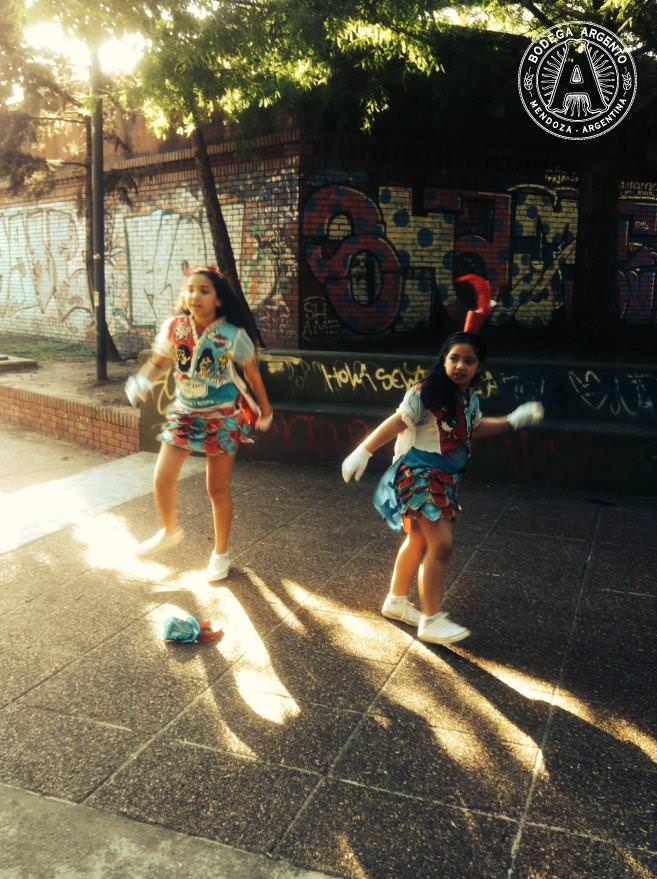
The communal outdoor party soon got started. A blur of generations were present; on-looking toddlers waddling and watching their parents, older señoras sat drinking mate (a typical tea) and keeping time while the men and women danced separately. Soon it was time for the girls to get measured up for costumes. Monica proudly showed me her daughters’ hand-sewn top hats, gloves and waistcoats jazzed up by rainbows of colours and sequins. The murga’s attitude and play on the suited and booted attire is said to originate from when African slaves, brought by the Spanish, sought a way to express themselves. That raw energy of disenchantment was channeled into raucous song and candombe dances, which grew into the carnival tradition by the end of the 18th century.
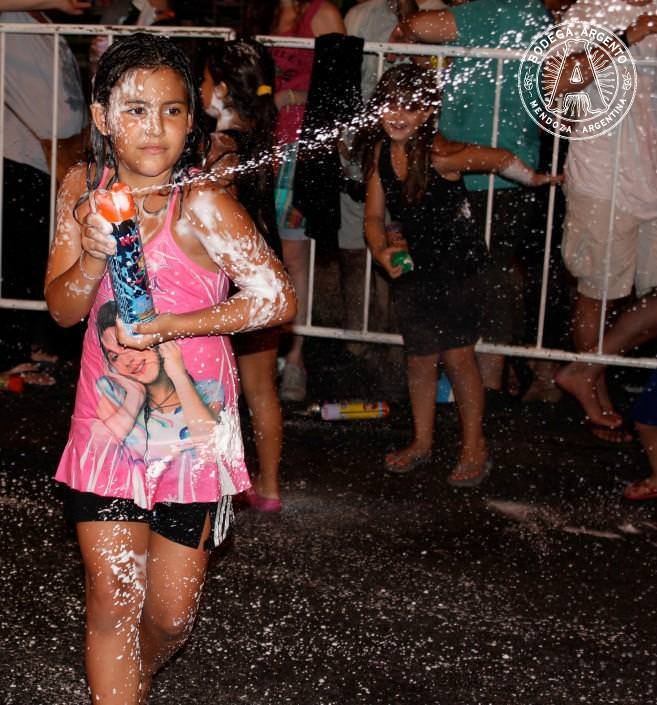
The original carnival spirit can still be felt in the plazas around the city today and if you’re Spanish is up to it you might be able to decipher the politically charged messages sung out in what’s known as criticas. Although very few of today’s murgueros are of African origin it is still seen by some as a form of social resistance and was consequently banned by the dictatorship that governed Argentina from 1976 to 1983.
Murga’s have been growing in popularity again since the 1990s mostly among the working classes and workshops were even set up to help people found their own.
‘The murga is our life, we are the murga. My kids love being here with all the others, I can’t imagine life without it,’ says Monica. ‘We’re here every weekend but sometimes we have to move to another spot to give the neighbours a rest! I handmade all those costumes myself,’ she added. Despite being from different barrios or political parties, it is this pride which bonds the murgas and can act as a system of social support in a country where there doesn’t always appear to be one. Monica Fernandez, the chief organizer told me how they picked up kids off the corner, literally saving them from a life on drugs and hunger during the country’s financial crashes. ‘We fed them, took them in, got them studying or doing some kind of work and look around, many of them are still with us today.’
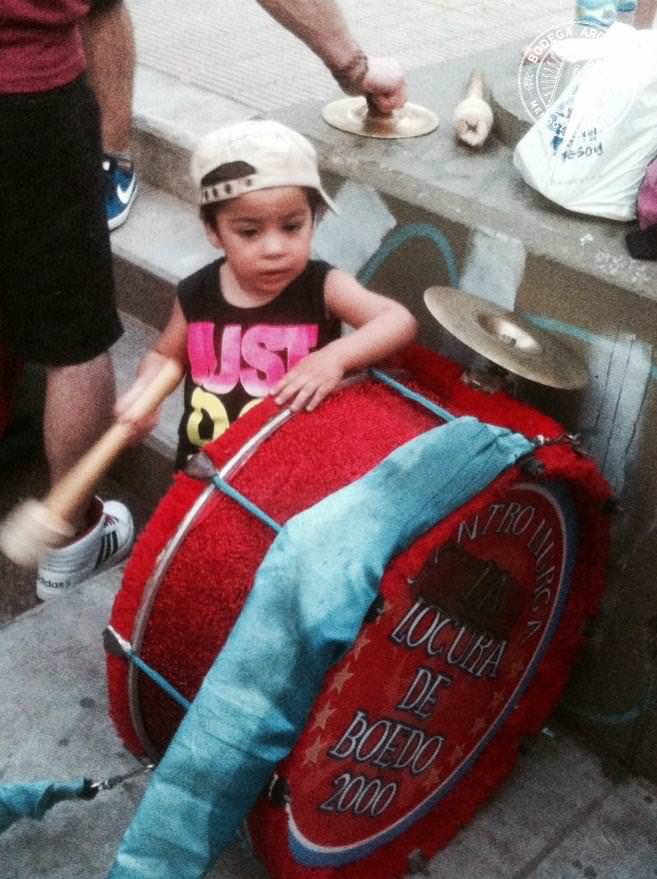
That original sense of carnival is palpable in the heightened energy of the dancers by the time rehearsals come to a close. The transformation of smiles under the sweltering heat leads to a last release of rowdy chants and celebratory hugs that wouldn’t be out of place at a big football game. It’s clear the murga is one big family here – in Boedo at least.
Other notable carnival parties this weekend
Special carnival party edition of BA’s drumming legends night La Bomba de Tiempo
Pool party in Pilar anyone? Get down to Green Parrot Wake Beach to party by the lagoon to top DJs
Gualeguaychú
Carnival outside of BA is best served up in Gualeguaychú where there’s more fiesta flesh and feathers on show than you can shake a stick at. This is Argenina’s souped-up, sexier version and if you’re thinking of heading up there you’re still not too late to the party.
Celebrations there have been going on every Saturday since January and rhythm seekers everywhere buy hot tickets to see the ostentatious comparsas (social club’s carnival dance groups) parading themselves before crowds of up to 40,000 fans down the half kilometer carnival runway or Corsódromo.
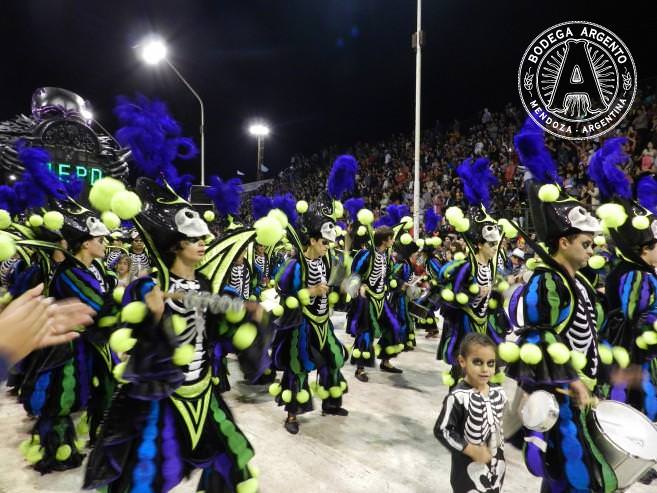
This year it’s the turn of the Papelitos, Mari Mari and O’Bahía comparsas to swish, dance and samba like their lives depended on it to bag first prize. The quality of costumes, synchrony of their choreography and floats all come under the judges’ scrutiny in the over-the-top displays of pure endurance. Very similar to the competitions in Rio, hundreds of dancers battle it out to be crowned Kings of the Carnival.
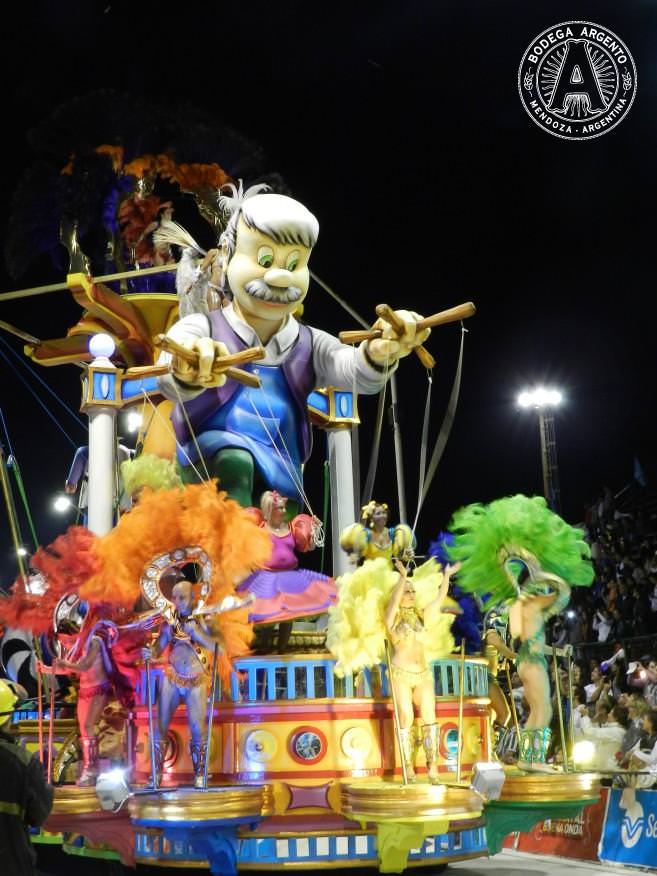
Built in 1997, the Corsódromo hosts dancers donned in over 70 thousand feathers and 500,000 sequins and pearls which make up the glitzy and revealing costumes. Floats representing anything from pirates to princesses snake through as the dancers entice audiences. An intoxicating assault of colours and bodies make it hard to see where one parade ends and the next one begins.
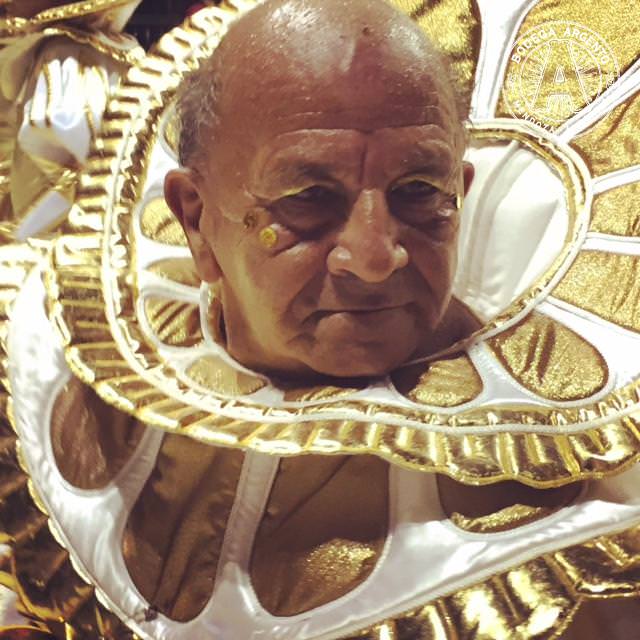
Many companies offer carnival packages these days where you can go for the weekend. If you’ve been flexing your carnival muscle you might even be tempted to do the three hour journey in a flying visit and come back the same day after partying the night away.
Sonja D'cruze
Latest posts by Sonja D'cruze (see all)
- BUENOS AIRES’ MEATY FEAST CHAMPIONSHIP - August 29, 2017
- Get the grapes in! Mendoza’s Vendimia Harvest Festival - May 15, 2017
- ARGENTINA’S SILVER LINING - October 6, 2016

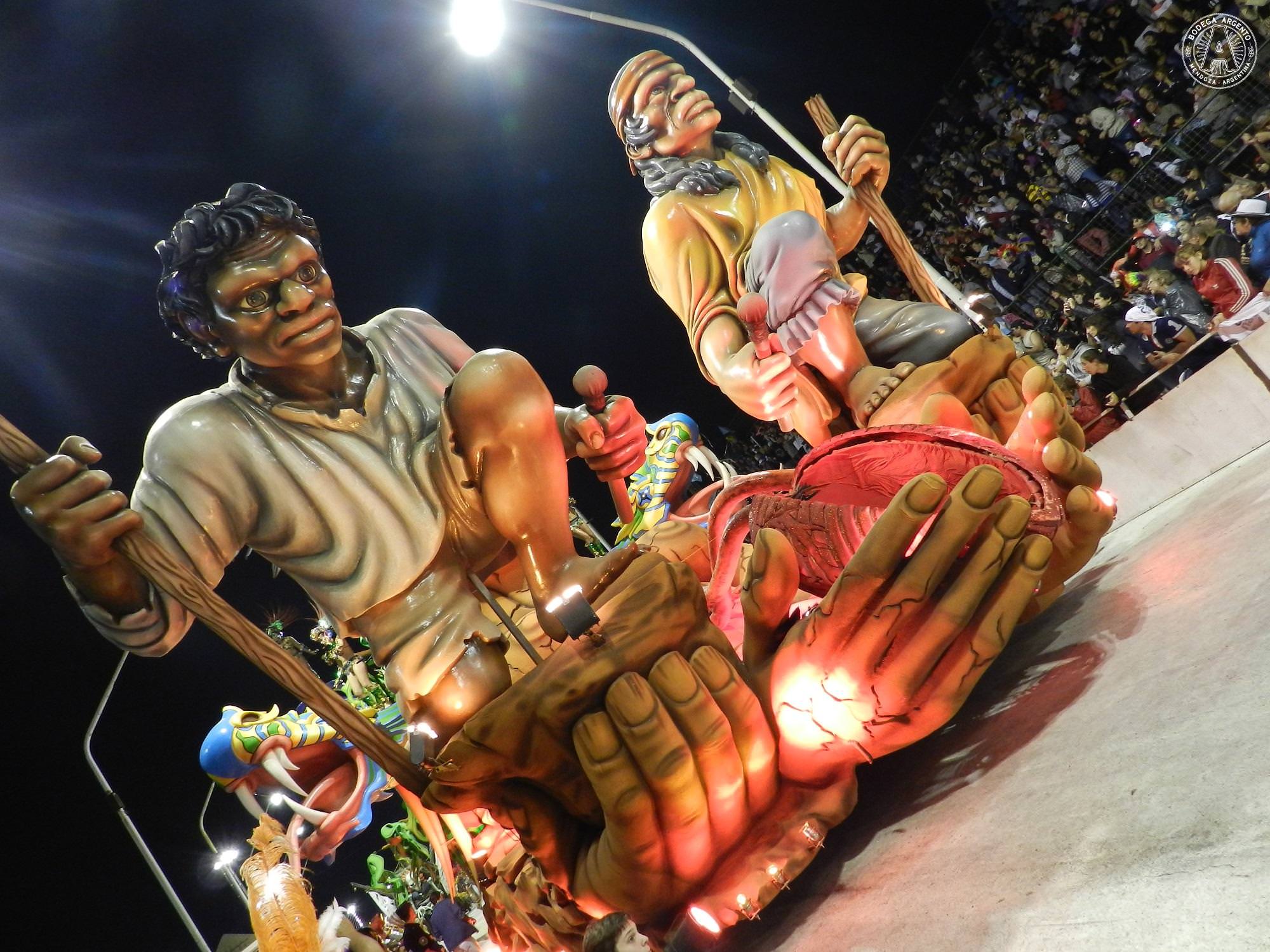
 COSTA RICA: THE FOODIEST STREET IN BUENOS AIRES
COSTA RICA: THE FOODIEST STREET IN BUENOS AIRES  FOLCLORE: FROM GAUCHOS TO ELECTRO BEATS
FOLCLORE: FROM GAUCHOS TO ELECTRO BEATS  CAMPANOPOLIS – A MEDIEVAL MARVEL FOUNDED ON A MILLIONAIRES’ DREAM
CAMPANOPOLIS – A MEDIEVAL MARVEL FOUNDED ON A MILLIONAIRES’ DREAM  Experience Carnaval 2013 in Argentina
Experience Carnaval 2013 in Argentina  Independent Tango Music in Buenos Aires
Independent Tango Music in Buenos Aires 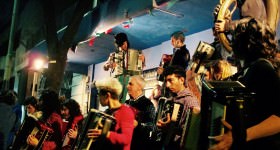 Musings on La Noche de los Museos
Musings on La Noche de los Museos  The Hottest Trends from the BA Catwalks for Spring/Summer 2015
The Hottest Trends from the BA Catwalks for Spring/Summer 2015  Gaby Kerpel Beats to a Different Drum
Gaby Kerpel Beats to a Different Drum 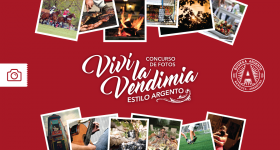 PHOTO CONTEST: LIVE VENDIMIA HARVEST IN MENDOZA WITH ARGENTO
PHOTO CONTEST: LIVE VENDIMIA HARVEST IN MENDOZA WITH ARGENTO 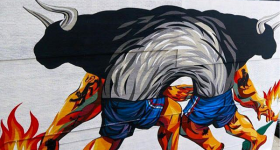 Five Argentine Street Artists to Follow on Instagram
Five Argentine Street Artists to Follow on Instagram 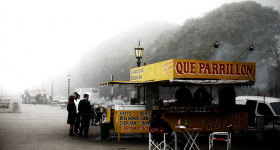 Street Food in Argentina
Street Food in Argentina